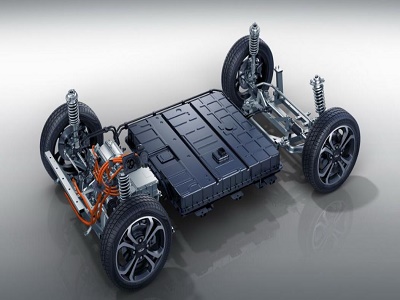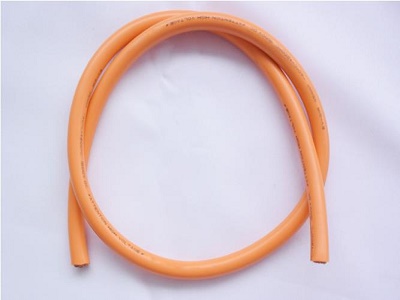
High-voltage cables for new energy vehicles are generally compose of high-voltage cables, connectors, protective materials mounting brackets, sealing rubber rings, labels, etc. The following figure is a typical high-voltage wiring harness assembly.
Structure of High-voltage Cable
High-voltage cables are compose of conductors, insulation, sheaths, shields, aluminum foils, tapes, and fillers.
- Conductor: Consists of annealed soft copper wire or tinned copper wire.
- Hard copper wire: cold-processed by drawing, with high tensile strength, suitable for conductors of overhead transmission lines, distribution lines, and construction lines.
- Soft copper wire: Hard copper wire is heated to remove the residual stress generate by cold working. It is flexible and bendable and has high conductivity. It is use to manufacture conductors of communication and power cables, electrical machinery, and various household appliances.
- Tin-plated copper wire: The surface of the copper wire is tin-plated to increase the weld-ability and protect the copper conductor from corrosion. And prevent the aging of the rubber insulation. Generally, high-voltage cables with a temperature resistance level of 150°C and above are tin-plated copper wires.
Conductors of High-voltage Cable
At present, the conductors in the new energy vehicle industry mostly use oxygen-free copper wires. So copper wires with an oxygen content of less than 0.001% and a high purity. And the copper content is above 99.99%.
The flexibility of high-voltage cables is mostly determine by the design of the conductors. This is why high voltage cables use special conductors with a large number of very small diameter monofilaments. And then concentrically twiste to form the soft conductors required for high-voltage cables. Another advantage of a larger number is better resistance to bending.
The nominal cross-sectional area is a code to guide production and design. And the cross-sectional area of the electrical performance of the cable should base on the conductor resistance. And they can understand as the conductor resistance is within the range of the nominal cross-sectional area. But the conductor cross-sectional area has errors.
Since the conductor resistance and conductor cross-sectional area are range value. And the outer diameter of the conductor can confirm according to the communication between the supply and demand sides. And the number of conductors is also different.
Insulation and Sheathing Materials

At present, the common materials use for the industry include low-smoke halogen-free cross-linked polyolefin, silicone rubber materials, and fluoroplastic materials.
- Thermoplastic material: This material can soft or liquefy quickly when heated. And they can soft again after heating, such as PVC, TPE, etc.
- Thermosetting plastic: After this material is cure and form, it cannot softe and form by heating.
The advantages and disadvantages of the current high-voltage cable insulation and sheath design in the car are as follows:
Cross-linking is the transformation of high molecular polymers from thermoplastic materials with a chain structure. So thermoplastic materials will melt and flow when heated. And the processing of cable insulation or sheathing takes advantage of this feature.
